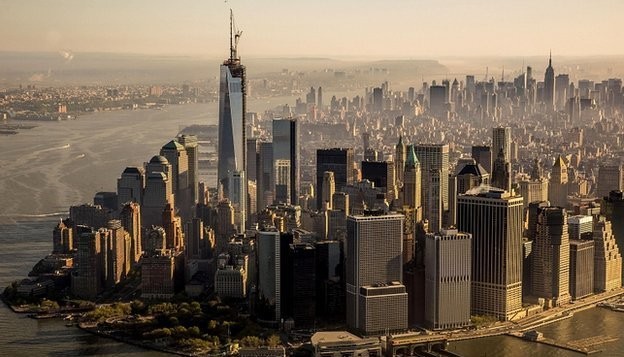
#BigData (and #ioT), Big City
With apologies to Jay McInerney for changing the title of his classic 1984 book.
Back in October 2014, I wrote a piece (Big Data Grows Up, ...and up, ... and up) after seeing an article in the Wall Street Journal about how someone with a telescope on a rooftop in Brooklyn, NY was studying the NY skyline, gleaning intelligence about when lights in the various neighborhoods in the city were turning on and off, gaining an understanding about life patterns in those areas (as well as the type of lightbulbs being used). Think about that for a minute.
There actually was a third 'smart cities' post of mine, from this past October, "#BigData as the Lifeblood of a City (Ecosystem) "https://www.linkedin.com/pulse/bigdata-lifeblood-city-ecosystem-charles-fiori-cfa", discussing how urban planning has changed from a static model to something much more dynamic given the evolution of BigData.
Well, this morning (12/12), the Journal, as part of its series on life in the year 2050, tells of the spycams, sensors, and other data gathering devices that are all over New York City and elsewhere in the world, gathering information on the rhythms in the world's first megacity (as of 1950). Interestingly, one team has photographed the city every ten seconds for 2 years. That will tell a story, over time. (Having grown up on Roosevelt Island with a great view of Manhattan and having seen the changes in the skyline over the years, I wish I had done something like taking the same picture at the same time every year.)
There had been a prediction suggesting that ease of connectivity would make big cities obsolete. Instead, "improvements in information technology strengthen cities that are centers of innovation by speeding the flow of ideas. Urban density facilitates contact between smart people and fosters innovation, increasing urban incomes as new businesses take hold." Everytime the population doubles, the amount of human interaction is said to increase by 15-20%.
Cities such as New York and Los Angeles and even the federal government, monolith that it is, are hiring Chief Information Officers whose function is far more than just making sure everyone's got fast, reliable wi-fi. There is a trove of data out there and they want to get at it. Sensors are pervasive, products are being designed so that everything can have an IP address (trash cans can tell the Sanitation Department when they are full and need to be emptied) and, incredibly, there are still Luddites, laggards, and naysayers who believe that #BigData is overhyped! New York, despite suffocating, pervasive inefficiencies in government, an aging infrastructure and a study calling the Big Apple the most 'wasteful, water-guzzling, and energy-intensive megacity in the world' is actually leading the municipal charge globally to use the Big Data revolution to study and make changes in how urban life is monitored and operates, from the use of sensors to keep up with 'water quality, traffic, and power use, to being able to pinpoint the location of the sound of gunfire.' The gunfire sensors can tell the difference between actual gunfire and, say, the slamming of a door or a noisy car engine. (I may have to re-think my opinion of this DeBlasio guy if he's got all this cool stuff going on.)
The scary (not really) part is how many sensors are already in place, on the way to many more. There are 10,000 public and privately owned surveillance cameras in Lower and midtown Manhattan, more than 1,000 license plate readers, and 600 radiation and chemical monitors and they are all connected. There are privacy concerns, of course, as well as worries about data and system security, which will be discussed and dealt with. The concerns will be shifting as the type of data generated itself changes. There are also concerns about Homeland Security which, in my mind, trump any privacy concerns. So there.
Everything will connect to everything else because it can. It will feel intrusive at times and some of the benefits of having as many as 50 Billion (100 Billion? 200 Billion?) interconnected devices won't be obvious or won't matter to many of us. The Journal article highlights a great many more examples of data gathering and analytics in global situations, all of which are breathtaking in their collective scope and creativity.
Thanks for your comments, suggestions, and support. Please feel free to share with your own networks if you find these musings valuable. I am considering contract and full-time work utilizing my writing skills and vast experience in all areas of the financial markets, especially fixed income.
The rest of my articles are here. https://www.linkedin.com/today/author/10758102
Leveraging marketing and integrated thinking to drive profitable growth
8y#BigData more profitable, when we know how it all fits together. Now we just need B-schools (and high schools really) to teach how all of the data fits together. It is not hard. It fits on a restaurant placemat and is suitable for coloring http://goo.gl/jMdfVN
Artificial Intelligence | New Technologies | Advisory | Strategic Intelligence | 4IR | International development | Data Innovation
8yThanks for the post!!!
🦋Prototypes-Tooling-Automation🦋Linto-Lindefors Hook Sweden🦋
8y👍👍👍
Specialist Senior Backend Software Engineer
8y:)